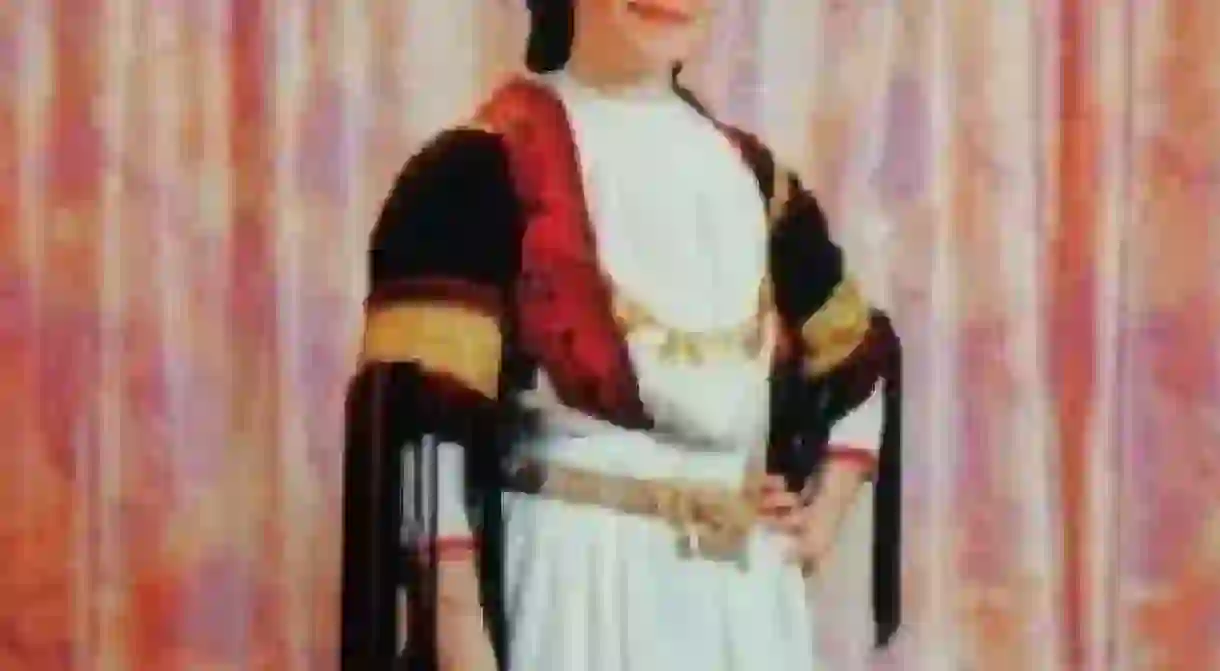A Brief History Of Karagouna, A Folk Costume From Thessalia

Like any country’s, Greece’s traditional costumes are remnants of days gone by and express the identity of a region or an area, or of a specific time. Greece has various folk costumes worn today for special occasions. One of the most complicated is the karagouna, worn by the Karagouni, an ethnic group scattered around the plain of Thessaly (or Thessalia) in central Greece on the eastern part of the Pindus mountains. Here is a brief history of the karagouna costume.
The karagouna is found scattered throughout the Karagouni region, which is located in the plain of Thessaly in the regions of Karditsa, Kalambaka and Tyrnavos, as well as Domokos and Farsala. The karagouna is also the name of the traditional folk dance known all over Greece, though there are several versions of it existing even outside the Karagouni region. As for the costume, it is said that there are three or four variants depending on the region. In older days, women wore the costume as wedding attire. The intricate, multi-layer outfits with bright colors were meant to represent the wealth of the region. Today, the costume has been simplified and is popular among traditional Greek dance groups.
http://instagram.com/p/BDa1tcPh4tz/?tagged=%CE%BA%CE%B1%CF%81%CE%B1%CE%B3%CE%BA%CE%BF%CF%85%CE%BD%CE%B1
The origin of the Karagouni people is quite uncertain; some say they come from the Aromanians, an ethnic group native to the southern Balkans. Others say they are descendants of the Arvanites, while still others claim they’re of Hellene origin. The men usually wore fustanella or pants, but the women’s clothing is another story.
http://instagram.com/p/BDwQ_oWPMb2/?tagged=%CE%BA%CE%B1%CF%81%CE%B1%CE%B3%CE%BA%CE%BF%CF%85%CE%BD%CE%B1
As stated earlier, the costume involves several layers of clothing; it includes a white underdress, an outer garment made of wool and a long sleeveless coat, as well as an embroidered waistcoat or vest, each of which look different according to the area. The whole outfit is then topped with a red felt apron, adorned with a velveteen band. Women also wore a headpiece made of an embroidered scarf wrapped and twisted around the head and decorated with coins on the forehead.
http://instagram.com/p/1in0jRtiy-/?tagged=%CE%BA%CE%B1%CF%81%CE%B1%CE%B3%CE%BA%CE%BF%CF%85%CE%BD%CE%B1
Of course, there are differences between the daily outfits worn at the time and the ones worn on more formal occasions. For example, women would add extra ornaments called manikoulia to their sleeves, as well as jewelry, for special events. And on her wedding day, a bride would wear chains of gold coins across her bosom, symbolizing her wealth.
http://instagram.com/p/BDZ5O_Ao4j-/?tagged=karagouna













